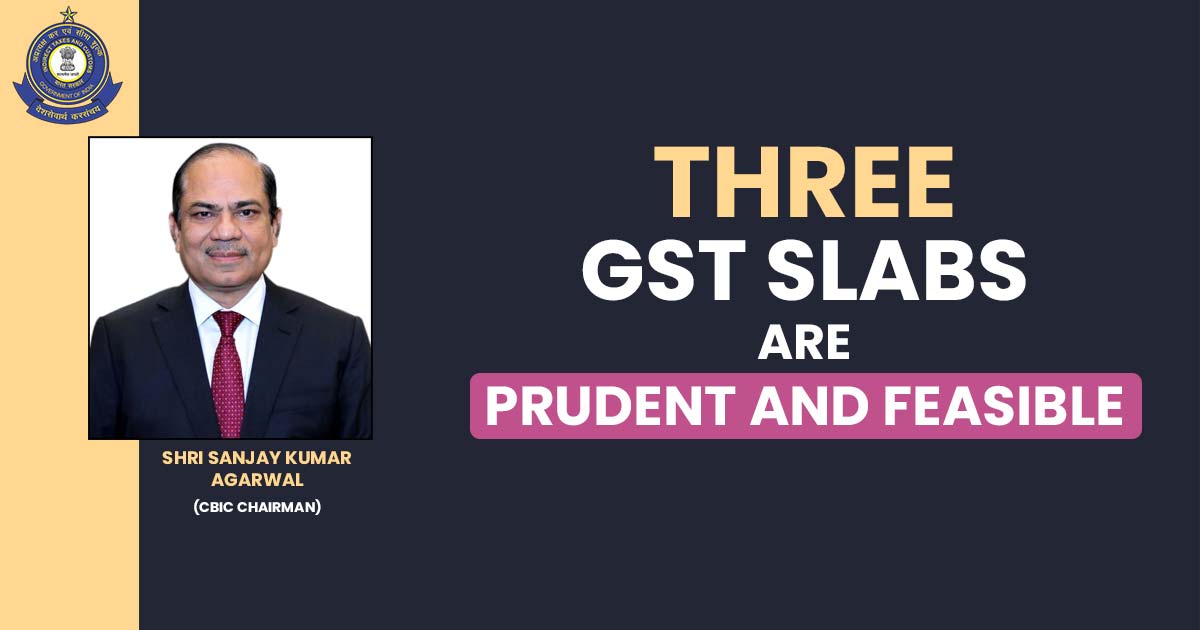
Central Board of Indirect Taxes and Customs (CBIC) chairman Sanjay Kumar Agarwal said that India’s indirect tax structure will drive towards minimum tax slabs and the Centre will overhaul the present classification under both goods and services tax (GST) and customs. It is possible and prudent to have three tax rate slabs in the GST.
In his opinion three GST slabs are possible, a median slab (and) a lower slab for the goods and services for the common person, and a higher slab for items used by the affluent class, of course. The final decision on the plan will be taken by the GST Council, he said. There are four tax slabs – 5%, 12%, 18%, and 28% under the existing goods and services tax (GST) structure.
The CBIC chairman expressed more tax reforms will take place in the forthcoming months and that the GST Council will embark on pending GST reforms in its subsequent meeting scheduled in the last week of August, along with the discussions on rate rationalization. The group of ministers on rate rationalization was reconstituted and is now headed by Bihar Deputy Chief Minister Samrat Choudhary. Agarwal added that a lot of work has been accomplished on rate rationalization and the newly reconstituted committee will only take it forward.
The previous committee handed over the work done to GoM on the rate rationalization and there shall be a presentation on the progress incurred in the forthcoming GST council meeting. The GST rate rationalization is the centre’s uncompleted agenda and a long pending demand from the industry. It was notified by the government that in the budget a complete review of the customs duty rate structure would be undertaken in the coming 6 months to rationalize and facilitate the same for trade simplicity, removal of duty inversion, reduction of disputes and a single window for speedy customs clearances.
The chairman of the country’s apex body of indirect taxes, the practice of rationalizing customs duty will be comprehensive and prove to be effective for the domestic industry with only four to five slabs, simplification of classification, and procedural reforms, making the whole process digital.
While there was increasing demand from the industry, particularly the gems and jewellery manufacturers, the lowered import duty would also reduce the chances of smuggling, The CBIC chairman stated.
Finance Minister Nirmala Sitharaman announced a rejig in customs duty on many products along with mobile phones and electronics, critical minerals, etc. and certain chemicals to support local manufacturing.









